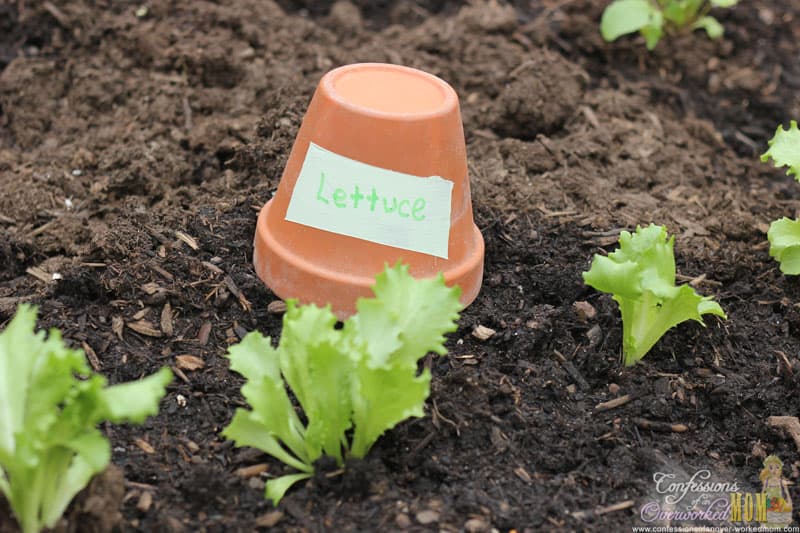Last Updated on May 26, 2023 by Ellen Christian
I cannot wait to get back in the garden and start growing salad greens again! Salad greens and microgreens are the first vegetable crop that we plant in zone 4. After a long winter, I really look forward to spring gardening again.Posts may be sponsored. This post contains affiliate links, which means I will make a commission at no extra cost to you should you click through and make a purchase. As an Amazon Associate I earn from qualifying purchases.
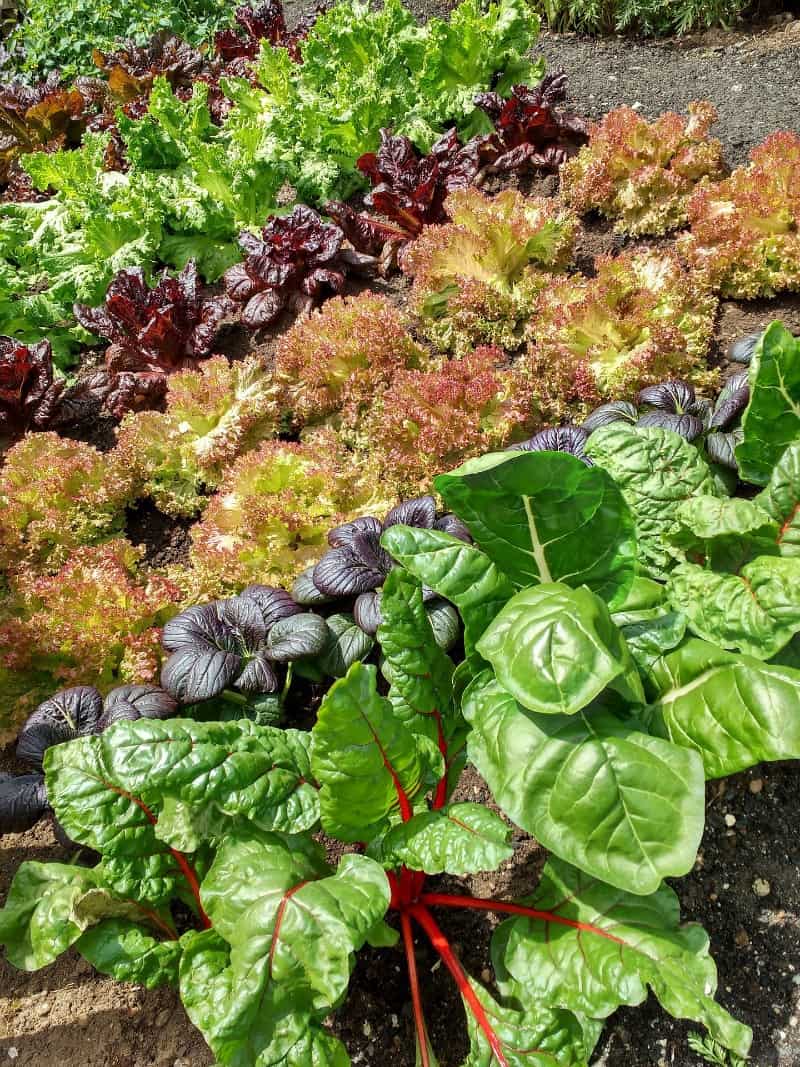
Growing Salad Greens and Microgreens
Growing your own salad greens is a great way to produce part of your food supply even in a limited garden space. Why not try growing some of your own food by planting your own salad greens. Lettuce, spinach, and arugula are easy options for the beginner gardener.
How to choose the right salad greens
When it comes to growing salad greens the biggest challenge is deciding what you want to grow. You don’t need a green thumb to grow your own salad greens making them a very good choice for beginners. Start with growing what you enjoy eating. Don’t waste time and space on things no one in your home will be willing to eat.
Don’t be afraid to try a new variety or two each year when planting your salad green garden. Look for new varieties of current favorites. Adding in some fun new colors like purple can add depth to both your garden and your salad bowl. If you’re gardening in limited space, give plants like spinach and arugula a try. They’re even better when harvested young. That lets you grow more in less space.
Growing lettuce in containers
Salad greens grow well in pots and even in indoor hydroponic systems. They don’t need a large amount of light and can grow well as long as they get plenty of nutrition. Salad greens can be harvested and continue to produce more food all season long making them a great option for home gardeners growing food in pots looking to maximize space.
Salad greens are easy to grow and will thrive in bags, window boxes, and random containers you have laying around the house. There is no need to get fancy to grow them.
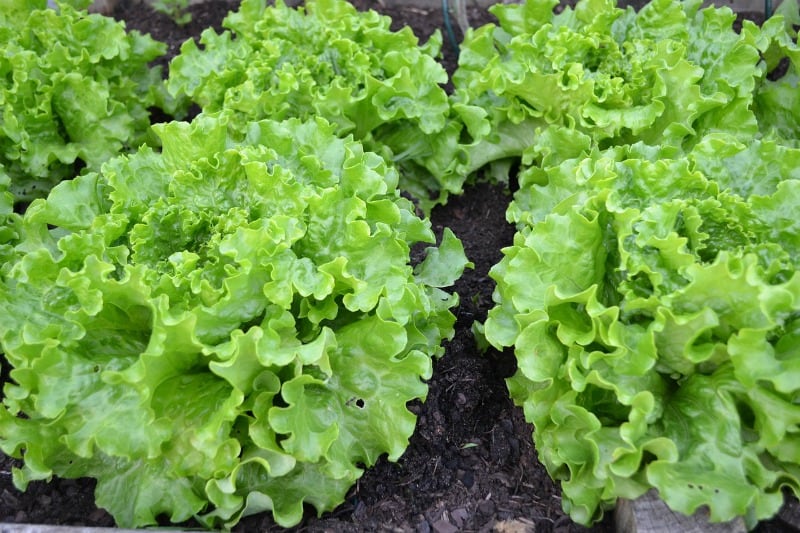
Can you grow salad greens in the shade?
Salad greens are one of the best foods to grow in shaded areas. Normally, if you are growing a plant for the fruit or the root they should be grown in the sun but salad greens are grown exclusively for their leaves. Be sure that your salad greens will at least get a few hours of quality indirect light. In most areas under a tree or on the side of the house will work well for growing salad greens.
On the other hand, your salad greens don’t need to be in the shade and can make great companion plants to go along with slower-growing plants like tomatoes. If your reason for growing in the shade is due to space this may be another great option for you.

How to plant salad greens
Planting salad greens is easy. They need well-draining yet moist soil. I suggest tilling in fresh compost before planting for the best results. Quality mushroom compost can go a long way in producing healthy salad greens packed with flavor. They should continue to grow and produce plenty of food throughout the season. Organic fertilizer or compost tea can be added later in the season to help your plants continue to produce. Here are some tips for making your own compost tea.
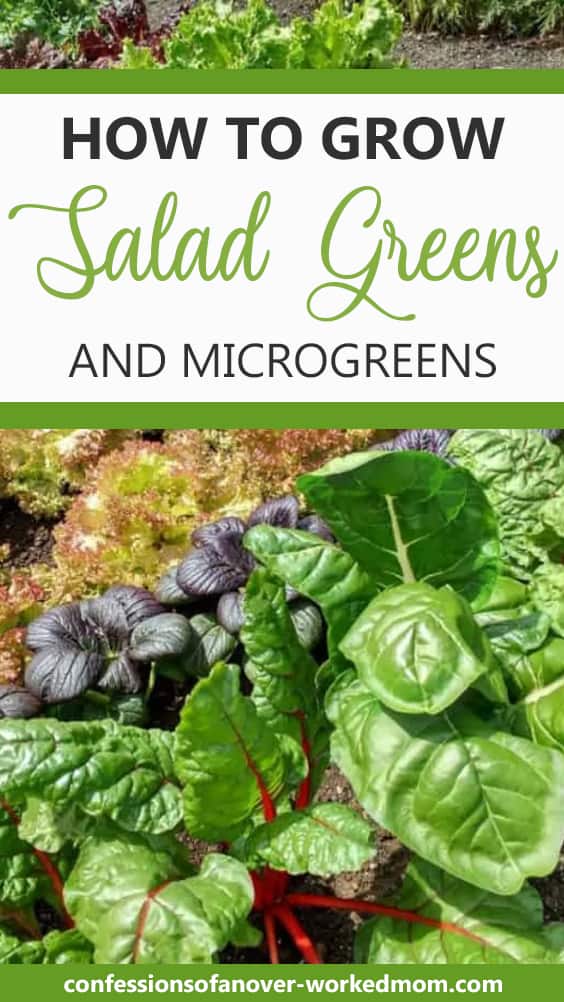
Salad greens are a cool-weather vegetable and thrive best in spring and fall gardens. In cooler climates where the nights drop in the 60s, you can grow them in the summer if you plant them in a shaded area with plenty of airflow. Aim for 6 to 12 inches between your salad green plants to give them plenty of room to spread. If you are growing salad greens that form a head, space them about a minimum of 12 inches.
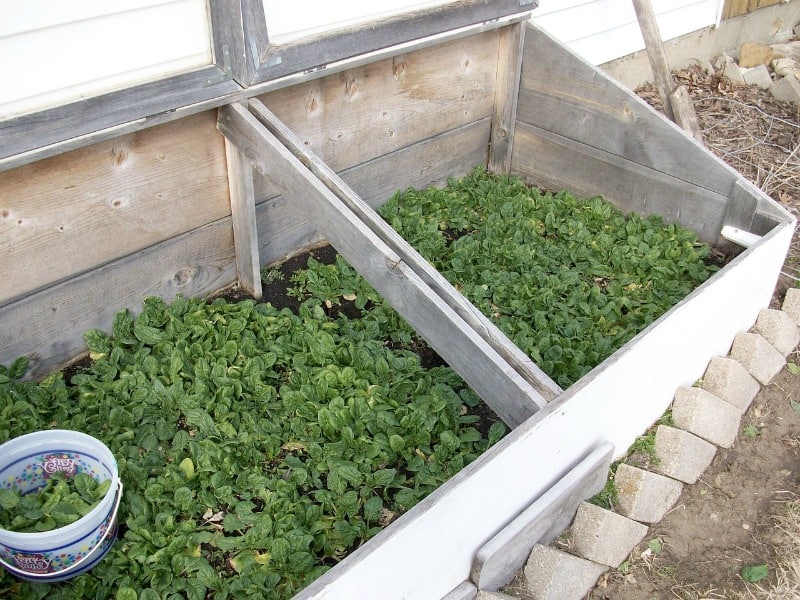
If you want a non-stop harvest all season long, plant your salad greens in succession 1-2 weeks apart. This is a great way to prevent you from having a large crop at once and having food go to waste. In the early spring and late fall, you can extend the season for your salad greens by using row covers or a cold frame to help keep the frost from damaging your plants.
How to protect your salad greens from pests
Salad greens tend to attract caterpillars, aphids, and cabbage worms and moths. The best defense for your salad greens is to take advantage of natural predators like birds that will slip in and snack on these pests. Place bird feeders in your garden to attract these protectors. Check your plants often to catch any prest that makes their way into your salad garden to protect them.

How to harvest salad greens
One great thing about growing salad greens is that you can harvest them early for baby greens that make delicious tender salads. Harvesting continually will encourage your plants to keep producing new leaves.
For head verities of greens, allow them to fully form their heads and harvest just as they show signs of opening for the strongest flavor.
If you want microgreens, it’s simply a matter of picking the greens when they are tiny and replanting them immediately so you have a continual supply.
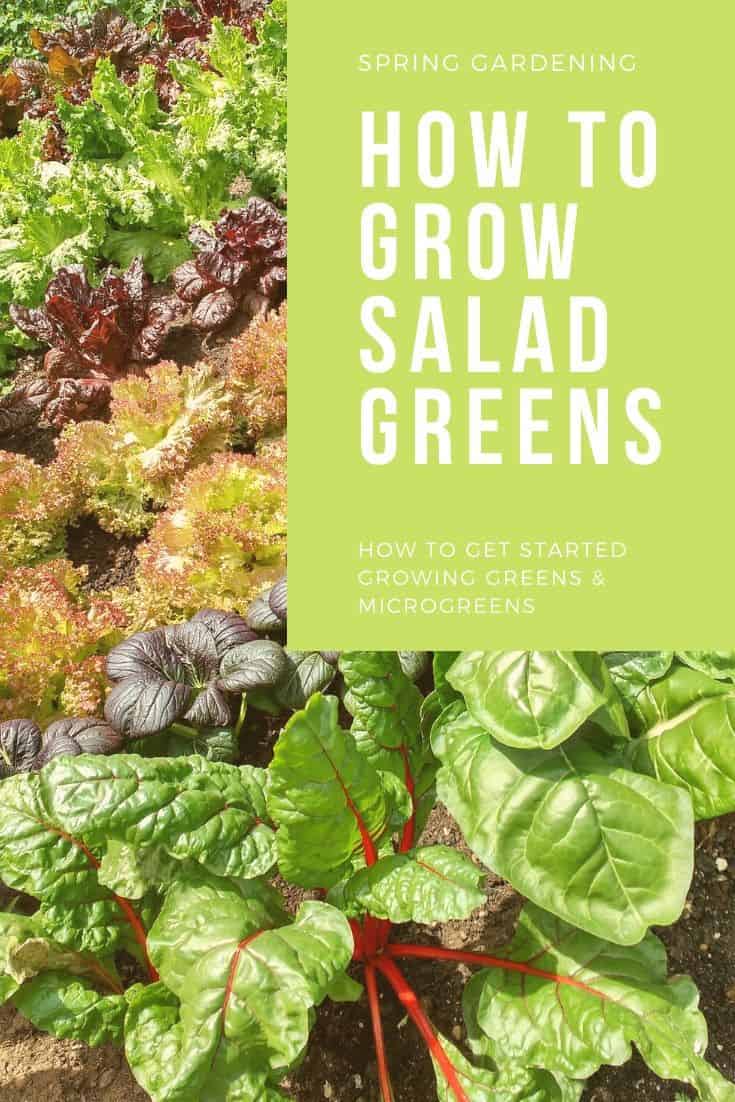
Too much heat will cause your salad greens to bolt and turn bitter. If you’re expecting a heatwave, harvest your greens so you can enjoy them before the heat makes them bolt.
I hope these tips for growing salad leaves will inspire you to try something different this year.
More gardening articles
- Cold weather crops for a cool vegetable garden
- Attracting native pollinators to your yard
- How to keep rodents out of the garden
- How to grow peas in containers
- Flowers that can take full sun

Ellen is a busy mom of a 24-year-old son and 29-year-old daughter. She owns six blogs and is addicted to social media. She believes that it doesn’t have to be difficult to lead a healthy life. She shares simple healthy living tips to show busy women how to lead fulfilling lives. If you’d like to work together, email info@confessionsofanover-workedmom.com to chat.

